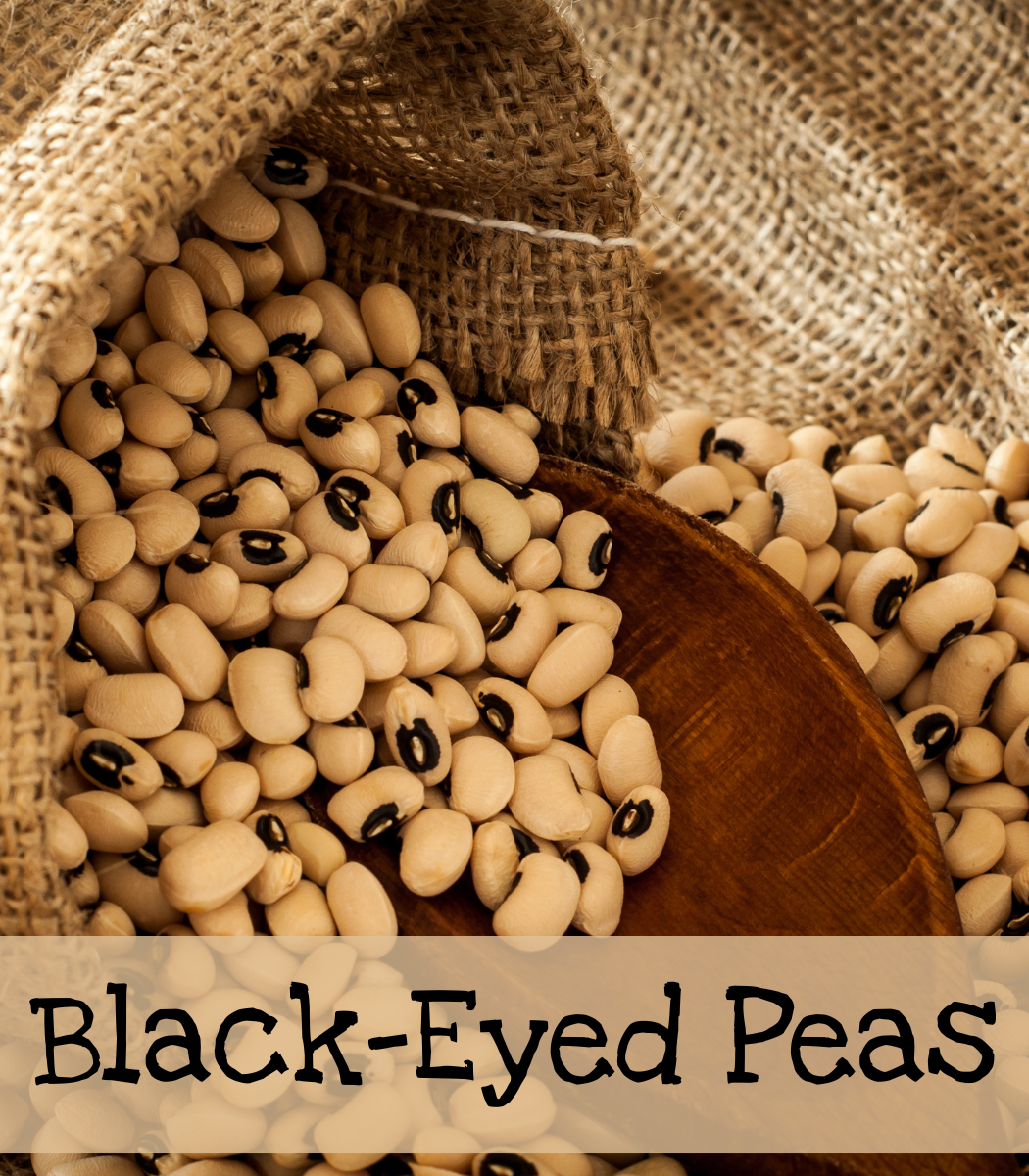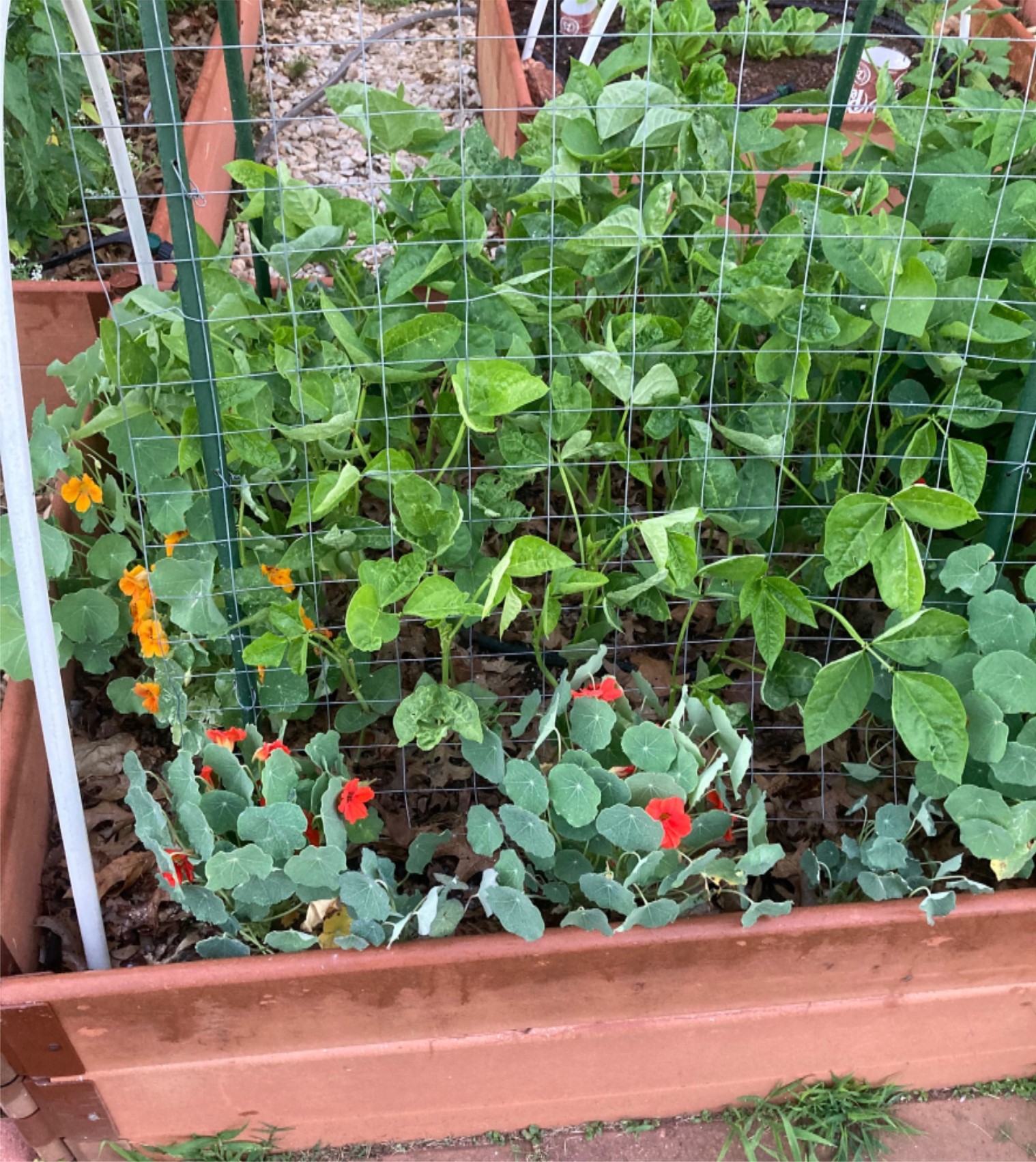
Cowpeas
Also known as black-eyed peas, cowpeas are easy to grow and store. A member of the legume family, this plant fixes nitrogen in the soil.
|
Blue Goose; California; Green Dixie; Purple Hull Pinkeye |
|
Vigna unguiculata |
|
Easy |
|
Easy |
|
3 years if properly stored |
|
Annual |
|
7-14 days |
|
None Optional: can add a legume inoculant (follow the packaged instructions) |
|
1 – 1.5 inches |
|
Vine to semi-bush |
|
Full Sun |
|
Blue Goose: 70-80 days California: 70 days Green Dixie: 60 days Purple Hull Pinkeye: 70 days |
|
April and May |
|
Yes |

Growing Tips

When to Start
Spring: After the danger of frost has passed and the soil has warmed to 65 F. (May 1 for Jefferson, GA)
Fall: Cowpeas can be planted from the spring planting time until 11-13 weeks before the first frost. (Apr 1-Aug 10 for GA)
How to Start
Direct sow when soil temperatures reach a consistent 65 F. Plant in full sun to a depth of 1-1 ½ inches. Plant in rows 2 ½ -3 feet apart and 2-4 inches apart in the rows. You can stagger planting every two weeks to keep them producing longer.
Care
Cowpeas are a vine or simi-bush. Vining varieties will need a trellis, while simi-bush varieties can be grown without one. However, even simi-bush can grow long vines if given the opportunity and they really are happiest when vining. Plus, longer vines equal more harvest.
Nitrogen is not recommended for legume crops as they are able to fix their nitrogen from the air. Too much nitrogen can result in lush growth and few developing peas. But as they fix nitrogen in the soil, it is good to rotate these around. Try planting a squash in the place where a legume was the year after the legume was grown and see what happens!
They are somewhat drought-resistant and will grow in poor soil. They are often used as a cover crop due to being relatively disease free and they don’t have many pest problems.
Harvest
To harvest for snap beans, pick when pods are 3-4 inches long.
To harvest for shelling or dry beans, leave the pods on the vines to dry completely. Wait to harvest until the pods are dry and brown and you can see the beans almost bursting through the pods. Cut the pods off the vine to prevent damage to the vine. Also keep an eye out for rain and harvest any dry pods before rain. Pods are very sensitive to moisture. Rain will cause the pods to mold and mildew or the seeds to sprout, ruining your harvest.
Shell the pods and allow the peas to continue drying out. Dry thoroughly. Store them in an airtight container in a cool, dry area for at least a year.*
Pest Management
Weevils can sometimes get into the dried seed. To kill them freeze completely dried seeds for 48 hours. Deer love cowpeas. Fence or cover to protect them.
My personal experience
Black-eyed peas are an easy crop to grow and one I do every year. The first year I grew them I just planted them like I do my bush beans as they are a semi-bush variety. They really wanted to climb, so the next year I used my A-frame trellis. If given the chance, they will climb just like any pole bean and get just as long!
I’ll tip them when they get to as far as I can reach. One year I struggled with aphids and the resulting ants in the peas. In the picture to the right you can see my use of nasturtium as a trap crop. They are supposed to attract aphids, so that they will not be interested in the cowpeas. However, every time I’ve used this method I’ve never had problems with aphids and I’ve gotten to eat the nasturtiums too! Guess its working, so I’ll keep doing it!
You can see the nasturtium blooming and the black-eyed peas haven’t reached their max length or started blooming yet. This is what you want when using trap crops.
Saving seeds is ridiculously easy. As long as I’m not growing asparagus beans at the same time, I can harvest like normal. When I harvest the dried pods, I bring them in to finish drying. After they have had a couple months of drying time, I’ll shell them and then vacuum seal them. Its a good winter project when there’s no other garden work to do.

My black-eyed peas and I’m using the boarder method of trap cropping with nasturtium.
Seed Saving

Isolation Distance
Cowpeas are self-pollinated, and different varieties of cowpea do not commonly cross-pollinate with each other.
However, they will cross with yard-long or asparagus beans which are also Vigna unguiculata. Separate by a minimum of 150′ to ensure purity.
Instructions
Allow pods to dry on the plants before harvesting, and don’t allow the dried pods to get rained on as they will mold or sprout in the pods ruining viability.
Features
- Blue Goose: A rare Southern heirloom. The 36-inch vines produce purple, gray peas.
- California: Heirloom. An old standard variety that is vigorous and high-yielding.
- Green Dixie: Heirloom. Seeds retain a slightly green color. Good for canning, fresh eating, and freezing.
- Purple Hull Pinkeye: Heirloom. Heat-loving plants are well adapted to Southern summers. Very productive. The pods and beans are green to purple. Good for canning, fresh eating, and freezing.

*Vacuum sealing and freezing the peas tends to preserve them better than storing them in an airtight container. Even after drying the peas, they still may have sufficient moisture to mold after a few months.
Use a trellis even, for semi bush/vining varieties. One like my A-frame trellis helps keep the cowpeas contained and allows for some of the semi bush variety to vine up increasing your harvest!
Sources:
Gardeningknowhow.com
